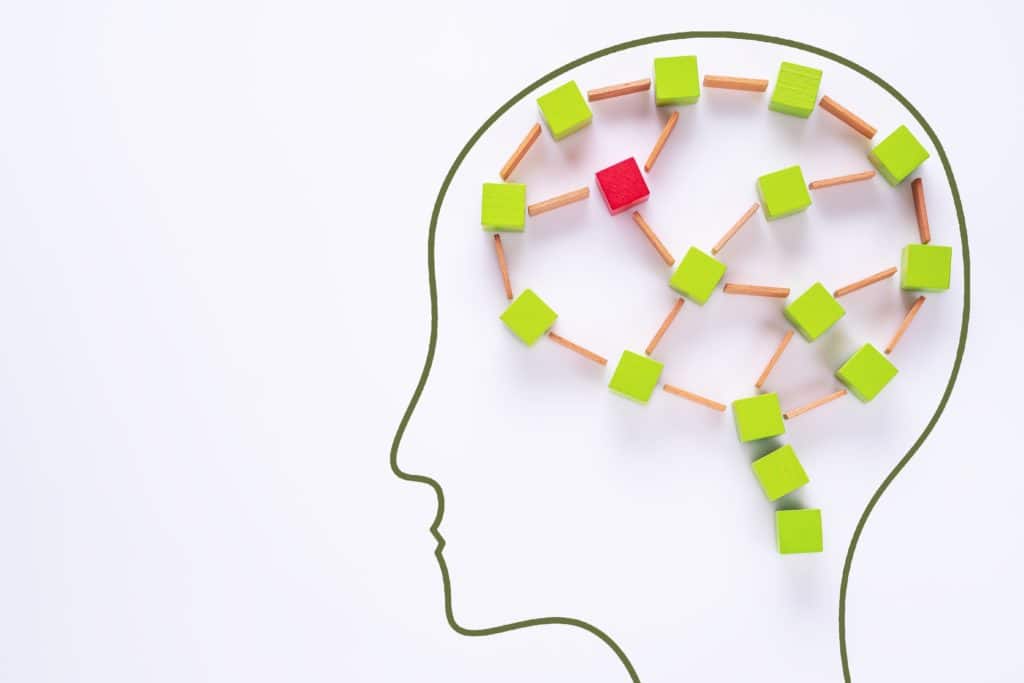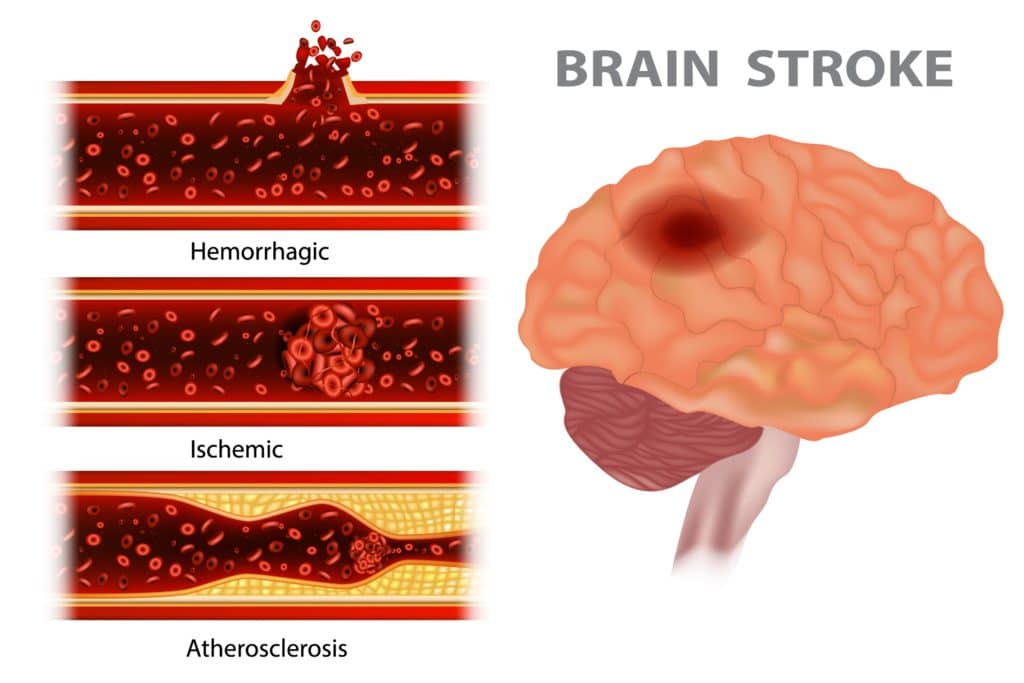Aphasia: A Central disorder of language
As Aphasien acquired, Central language disorders are referred to by damage to limited areas of the brain occur, particularly following a stroke. Depending on the area it comes to very different interference patterns and accompaniments, which make it difficult for the Concerned communication. Under favorable conditions and with a good success of the therapy of the disorders are (partly) reversible. The exact expression and also of course are very individual. Usually older adults are affected less often, it also comes to a child’s Aphasien, for example, after an accident injury to the brain.
Table of contents
A brief Overview
What is aphasia? Which occur Aphasien? And what the stakeholders expect? The most important facts to these questions summarized in the following Overview, while detailed information can be found in the following article:
- Definition: aphasia is an acquired, Central conditional language disorder, on the basis of a circumscribed brain damage occurs. The term means “lack of language”, in General, no lack of voice, but a different impairment of all language modalities. Sufferers have deficits in the area of speaking, understanding, reading and writing.
- Causes: aphasia mainly occurs after a stroke. Usually, an ischemic cerebral infarction is caused by a Vascular occlusion. But also bleeding in the brain may be the cause, as well as other localised brain injuries and brain diseases.
- Course and prognosis: All of the individual cases, and thus the course and prognosis are very individual, so that no generally valid statements can be taken. An aphasia is, in principle and under favorable circumstances (partially) reversible and treatable. The respective success of therapy and the duration depends on many factors.
- Diagnosis: During some test procedures, the classification of the speech disorder and determining the severity as a snapshot allow you to have speech therapists continue to be over-sensitive, and individually adapted methods of aphasia accurately diagnose, the development to watch, and for those Concerned to treat.

Definition: aphasia as an acquired disorder in all modalities of language
Aphasien are common neuropsychological syndromes, which are characterized on the basis of different of circumscribed brain damage caused by loss or deficits in the area of fully acquired language. Derived from the Greek, the word composed of the prefix “a” (absent) and the term “phasiz” (language). In General, it is not a complete loss of speech but to different impairments in all four modalities of Language: speech production, speech comprehension, reading and Writing. This means that all the skills of language work correctly and previously in memory is usually stored processes and systems for each linguistic Utterance is necessary, the Affected in varying degrees. Aphasien are disorders of language education, the language of memory and of language comprehension.
Normally, the language modalities work closely and in a coordinated manner. An aphasia is present, write, and say Affected, for example, something other than the thinking, or you read out something different than you do with the eyes. Also is often perceived and heard what is said. This is referred to as a concurrency fault.
Aphasic disorders are related to the areas of the language, in varying degrees, leading to many different forms and symptoms. So, for example, difficulties in word finding, grammar, sentence formation and according to education, both in speech and in Writing be noticeable. It may happen that the person Concerned can speak hardly at all or only partially and haltingly or fluently speak with often false and misleading words and sentences. And also the Understanding may have significant deficits.
A frequently applied classification of the various aphasia forms a distinction between the most serious Form of global aphasia and the lightest Form of amnestic aphasia. Further described in more detail forms of the so-called Broca’s aphasia (motor) and Wernicke’s aphasia (sensory).

Accompanying disorders
Together with a aphasia of other disorders often occur. Thus, for example, processes, the coordination of movements, including the vocalization and breathing (dysarthria and Dysarthrophonie), the speech processes, be affected.
In the case of an accompanying apraxia, this will not affect the planning of movements and Movement sequences, so that, for example, in the case of a apraxia of Speech, individual Sounds are accurate and not timely produced. Also apraxia of the oral and facial muscles or the limbs may be affected, so that everyday movements and actions may be restricted.
In addition to the disorders that primarily affect the language, it can come as a result of this brain damage, other side effects, such as perceptual and memory disorders, attention and concentration, paralysis of a body and face half (hemiplegia and facial palsy) or a half-side (often right-sided) loss of visual field (Hemianopsia). To communicate with each of the above-mentioned problems, the competence is reduced, linguistically and non-linguistically, for example by means of Gesture and facial expression.
Often members also report mood swings and personality changes of the Affected. It is often unclear whether this is to be regarded as a direct consequence of brain damage or a secondary response to the altered life situation. In view of the importance of language and communication in human relationships, be it professional or private, has a aphasia not infrequently far-reaching psycho-social consequences.
In any case, the aphasia represents a more or less great change both for the individuals Concerned as well as for the relatives and the nearest environment. Important for everyday life and for the (language) therapy is the fact that in multilingual Aphasikern the mother tongue remains the most likely to receive.

Contrast to other speech disorders
It is important that one speaks only of a aphasia, if already acquired language is lost. This represents a decisive difference to others and especially congenital speech disorders. In contrast to the problems that exist in the case of a congenital deafness or deaf-muteness, a speech, a comprehensive is a aphasia still Know-in the long-time voice memory available. The access and Use of this knowledge is, however, affected.
Also a fluent aphasia occurs due to certain areas of the brain that limited damage to the dominant hemisphere, but not in the case of diffuse diseases of the brain, the voice in consequence, interference can result. In the case of such generalized disorders, such as dementia, is not affected by the language system, but disturbances in consciousness, in perception and in Thinking manifest themselves in the language.
In principle, aphasia can also occur in children and adolescents, for example, after accidents, with brain injuries. But this is only rarely the case. It is important to the aphasia of a delay in development of language to distinguish, which can occur in children and the symptoms to be similar. In the various therapy approaches, the fundamental difference of language disorders. While in the case of a child with language impairment, the language is gradually built up and extended, in the case of adults with aphasia to mobilize the existing knowledge of the language and make it usable again.
Frequency
The quantitative Occurrence of Aphasien is still little known. In Germany, it is estimated around 50,000 new cases of aphasia due to stroke. Since many Aphasien remain long-term, it is estimated that the prevalence of 70,000 to 80,000 cases in Germany.
Basically, people of all ages can be of an aphasia affected, mainly in (older) adults in this acquired language disorder suffer. According to the Federal Association of aphasia a aphasia occurs in Germany, every year approximately 3000 children and young people, in particular, as a result of a traumatic brain injury.

Causes
About 80 percent of the brain injuries that cause aphasia is a stroke (Apoplex) and related damage. In order for these bodies attacks the main cause of aphasic disorders. In the majority of cases (approximately 85%) are ischemic brain infarcts the cause, the so-called white strokes. This leads to a vasoconstriction, a reduced supply with oxygen and glucose of certain arterial regions of the brain. Often this is triggered by a so-called thromboembolism, the Thrombus (blood clot) will be washed away, for example, from the heart, in the blood and elsewhere in the brain, a vessel part or a whole of the blood vessel closes.
Much less (about 15 percent) is a stroke due to a cerebral hemorrhage, for example, by atherosclerosis already damaged vessel bursts into the brain einblutet. But also other vascular diseases can also play a role.
Other rare causes of aphasia skull injuries are due to accidents (traumatic brain injury), brain tumors, other brain diseases or operations, which lead to damage in the dominant hemisphere.
Usually the left brain is the dominant side, on the language and provided it is programmed. This is supplied by three major arteries with blood. The most important is the Arteria cerebri media (middle cerebral artery), which supplies also the language of important areas of the brain. At the stroke of the left hemisphere seizures is preferably affected in exactly this area, what is referred to as a media infarction. The size and the exact localization of the lesion determine to a large extent, the expression and also the prognosis of the disorder.
Course and prognosis
A number of different factors plays a role in whether, how far and in what period of time, a lost language ability can be obtained. In principle, the cause and the severity of the disorder have a significant influence on the recovery and the success of the therapy. So Concerned with initially only mild language deficits most of the time a better Chance to have a full Rehabilitation, as Affected with a severe Form. Nevertheless, a favourable course is also in the case of serious Aphasien.
Ultimately, the therapy depends the success and the timeframe in which progress can be made, is always individual depending on the personal Situation and the exact appearance including possible side effects (physically and mentally). No aphasia is to be compared with any other directly, and it has to be very careful to take statements of potential Therapy. It is established, the sooner a therapy begins, the better the chances of success.

According to the German society for neurology for more than 60 percent of survivors with initial aphasia after half a year, have no more disturbance. About one-third of the disruptions to normal even in the first four weeks, largely, what is known as Spontaneous regression. Further studies indicate that within one year after the Occurrence of the remaining communication problems go back even further. But even the first of the year, progress can be achieved.
Diagnosis
For the diagnosis and for the determination of the severity of different Tests available, such as the Token Test of the Aachen aphasia Bedside Test (AABT) and the Aachener aphasia Test (AAT) in the acute and post-acute Phase. These Tests, however, are to be regarded as a snapshot in time and do not provide completely valid results. Since the disorder depend on the pattern of many factors, vary greatly, and are complementary to such test results continuously and to check. The ratings can help you better predictions and treatment choices accordingly.
Often such Tests are performed only if the Affected are physically and mentally stable enough for such an onerous proof of performance. In professional speech therapy, as a Central Element of any aphasia treatment, be used, as a rule, more cautious, and personally tailored methods for the exact diagnosis and individual therapy planning. (jvs, cs)
Literature and further information:
- Lutz, L. (2010): The Silence Understand – About Aphasia. 4. Edition, Springer-Verlag Berlin Heidelberg.
- Masuhr, K. F. & Neumann, M. (2007): Neurology. 5. Edition, Thieme, Stuttgart.
- Springer, L., Schrey-Dern, D. (EDS.) (2006): a clinic and Rehabilitation of aphasia, Thieme, Stuttgart.
- Thiel, M. M., Women In Rural Development, C., Weber, S. (2014): Aphasia – Ways from the language of the jungle. 6.Edition, Springer-Verlag Berlin Heidelberg.
- The German Federal Association for academic language therapy, and speech therapy e. V.: information for patients and relatives
